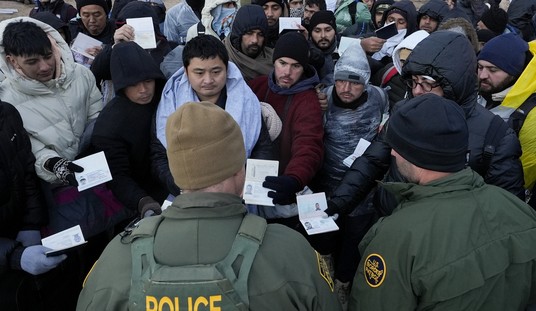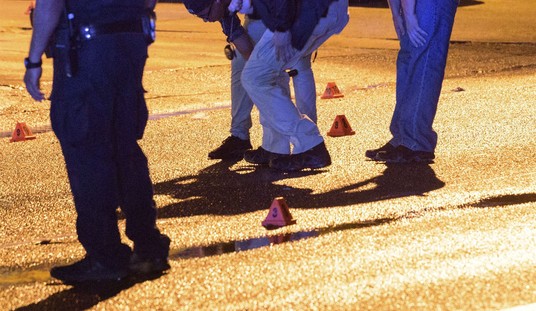
Bearing Arms Editor Bob Owens’ article on the shooting of 70 year old Bobby Canipe by York County Deputy Terrance Knox asks if the shooting is “A Law Enforcement Training Failure?” It is that and more.
Owens wrote:
This heart-wrenching video strongly suggests that we’re failing law enforcement officers with our “modern” training standards.
In this dash-camera footage, a York County, SC Sheriff’s deputy pulls over a truck for expired tags. The elderly driver gets out of the cab and reaches something in the bed of the vehicle. The deputy yells several times in warning and then opens fire, spraying the truck (and the surrounding countryside) with six shots, hitting the man once in the stomach.
The senior citizen wilts under fire, slumping against the side of the truck as the deputy yells at him to drop the “gun.” Just a few second later the deputy realizes that the “gun” is a cane, and rushes to help the wounded man.
By all means, take the link and watch the video. It’s one of the most extraordinary—and horrifying—things I’ve ever seen. Virtually every competent police officer has nightmares about being involved in a bad shoot. This is a textbook case.
Mr. Owens’ focuses his article on training, which is indeed a worthy and correct focus, however, there are other issues that have as much, and probably greater impact on these situations. First, however, let’s review the law as it applies to deadly force.
Deadly force may be used when a reasonable person believes that there is an imminent threat of serious bodily injury or death. It sounds relatively simple, but each incident must be judged on its own merits. Keep in mind that the police might be accorded a bit more latitude than the average citizen—might be. The courts will commonly judge police shootings by the “reasonable police officer” standard because they will assume that police officers have enhanced training and experience. This should tend to impose a higher standard on police officers, but all too often, it’s just the opposite.
It’s not possible to assume a given officer has a specific standard of training. Police agencies do their best to provide competent tactical and shooting training, but most fall short of the kind of training any citizen can get at schools like Gunsite and many others. Notice that I speak of firearm and tactical training. Any use of a firearm must be accompanied by competent tactics, tactics that seem to be missing in this case, but more about that shortly.
Most police officers, as I’ve often written, are not gun guys and girls. Most are no longer veterans, and even most veterans, unless they were military police officers, receive little or no handgun training. Most new police recruits have little handgun experience or skill, and after their initial academy training, which is designed to get them to the point that they can fire a qualifying score on a clean, dry range shooting at targets of known size and shape at known distances, most will experience only the refresher training provided by their agencies, that and yearly qualification shooting with generous passing scores and the opportunity to reshoot as many times as necessary to pass.
Competent training does not teach officers to be fast, but to be smooth, because smooth is fast. Speed must always be balanced with accuracy. What good is the fastest draw on the planet if one cannot also hit one’s target with each and every shot? Every shot off target not only fails to accomplish the sole purpose of shooting at another human being—immediately stopping them from doing whatever it was that gave the shooter the legal grounds to shoot in the first place—it endangers the innocent. Police officers are taught that they are solely responsible for every round they fire, but this too is frequently not enforced.
How many officers actually know just how fast and accurate they are? How many have no doubt how many fractions of a second they can afford to wait and still hit their target—and nothing or no one else—at any range? Far too few. But more is involved, specifically, situational awareness, tactical knowledge and experience.
Competent training teaches tactics such as the effective use of cover—materials that will stop the bullets of an aggressor—allowing an officer to better control the situation. This is why officers usually park with their left front wheel angled to the left and the left front fender of their vehicle between them and any vehicle they are stopping. If the driver or passenger begins to shoot at them, they have their own vehicle’s door, and the front of the vehicle, including the engine block, as cover. Positioning the police vehicle this way also tends to protect the officer from passing traffic.
Officers are also taught proper commands. In any potentially dangerous situation, the best command is “don’t move.” It is clear, easily understood, and a good thing for witnesses to hear if disobeyed and shooting becomes necessary.
Situational awareness cannot be effectively taught. Certainly, one can learn specific tactics that will be helpful in commonly experienced situations, but situational awareness goes beyond that. In the same way that Olympic athletes, exceptional writers and scientists are born, not made, some people have the genetic endowment that allows them to see, imagine and understand things others will never see, imagine or understand regardless of their training.
What this means is relatively simple to understand. An officer with excellent situational awareness making a traffic stop is continually, from second to second, asking “what if?” They are constantly formulating responses and actions to take depending on what they might face. In a very real sense, they can stand outside themselves as though they were an observer of the drama in which they are participating. This gives them the ability to wait longer, observe more accurately, and if absolutely necessary, to act effectively.
Experience is also involved. Police officers always prefer that people stay seated in their cars on traffic stops. But they also understand that elderly people may not understand this protocol, tend to have diminished hearing and also tend to react and move slowly. In fact, most people react slowly in potentially dangerous situations. Now to the actual shooting.
The video opens with the dash camera view of the stopped pickup truck, which appears to be a 4WD vehicle—it’s relatively tall. The driver’s door opens and Canipe slowly steps down. The video is not clear, but he is obviously elderly and slow; his movements are halting and unsteady. From the moment his first foot touches the ground until the first of six shots are fired, only about seven seconds elapse.
About two seconds after both of his feet touch the pavement, Canipe takes a few halting steps toward Knox, turns his right side to his vehicle, reaches into his vehicle and withdraws his cane. Keep in mind that the video is not nearly as sharp as the vision of one at the scene. As Canipe does this, a beam of light, possibly the spotlight by Knox’s door or a flashlight, plays toward the right side of the pickup and then on Canipe. Knox’s vehicle obviously has “takedown” lights in the light bar—lights focused to illuminate stopped vehicles at an appropriate distance from a police vehicle. Canipe and his vehicle are clearly visible.
Simultaneously, Knox is saying, loudly, “Hey Sir…Sir…Sir…” He is apparently trying to get Canipe’s attention, but he is not giving him any commands; he is not, in any way, telling Canipe what to do or what not to do.
At this point, Canipe is turning fully toward Knox and is swinging his cane—in his right hand—downward from the vehicle to the ground; his left hand remains braced on his truck. Knox clearly does not recognize that it is a cane, and therefore, no threat, and says, in a voice laden with shock and surprise: “Whoa!” As he begins shooting, he screams words that sound like “Oh hey.” He fires a fast fusillade of what sounds like 3-4 shots, there is a brief pause, and then two additional shots, with a bit of space between them, are fired. At least one of the shots in the first fusillade appears to strike the back window of the truck, approximately where a driver would be seated. The video does not have sufficient resolution to tell where the other shots hit.
After being shot, Canipe remains standing, but begins to bend forward from the waist, moaning in pain. He is clearly leaning on his cane, yet Knox yells, “Drop the gun; drop the gun,” and Canipe, finally understanding what Knox is yelling about, tells him it’s his cane. At this, Knox runs into the view of the camera to Knox and a woman, who was in the truck all the time, steps out and around to the driver’s side of the vehicle.
An AP/ABC News story has the Sheriff’s reaction:
Before showing the video, York County Sheriff Bruce Bryant urged reporters to put themselves in the moment and see how Canipe doesn’t respond to the officer and pulls out the object in the dark. He said officers in South Carolina are allowed to use deadly force if they think their lives are in imminent danger.
‘I would have had to take the same action he did,’ said Bryant, who has been in law enforcement for 42 years.
Bryant said his officers get extensive training, even taking part in exercises where people emerge with cellphones and other items and pellets are shot at deputies,
‘You watch the action of the walking cane. He was hollering at the man,’ Bryant said. ‘You can’t wait to see a muzzle flash before you take action because when you see the muzzle flash, it’s too late.’
According to the ABC story, Knox was standing “out in the open with no cover” and was trying to get to cover as he was shooting.
ANALYSIS: Would a reasonable police officer, in the same circumstances, reasonably believe that he was in imminent danger of serious bodily injury or death?
Despite Deputy Knox’s emotion upon realizing he shot an elderly man wielding nothing more dangerous than a cane, despite the explanations of Sheriff Bryant, who would have shot Canipe too, the answer has to be “no.” This was not a legitimate use of deadly force. In fact, Deputy Knox did little right and Canipe and his female passenger are alive only because of Knox’s poor and panicky marksmanship.
Knox apparently positioned his vehicle properly, but removed himself from cover and was obviously not thinking about it as Canipe got out of his vehicle. Police officers virtually always want people to stay put during traffic stops, but Knox does not tell Canipe to stay in his vehicle as he exits, nor does he tell him to get back in his vehicle when he steps outside. Instead, he ineffectually repeats “Sir,” which is no more a command for Canipe to follow than repeatedly saying “hey.”
In other words, Knox was not controlling events; events were controlling him. Rather than immediately getting behind his car door—and the engine block—when Canipe began to exit the vehicle—he had the time—he stood there, unsure of what to do, saying “sir” three times.
As Canipe reached for and grasped his cane, Knox was already panicking. Taking him at his word, he thought he saw a gun, but he was wrong. Watch the video. Canipe is not holding the cane as one would have to hold a shotgun. It wasn’t the size, weight or configuration of the shotgun Knox claimed to have seen. It obviously wasn’t as heavy as a long gun, because if he’s going to fire it at Knox, he’s going to do it one-handed while his other hand is helping to hold him upright by grasping his truck.
Does Canipe actually point the cane at Knox? Only for a fraction of a second, and it does not appear to actually be pointing at Knox, only vaguely toward the rear of the vehicle. From the moment he pulls the cane free of the truck, it begins to swing downward to the ground while keeping his left hand in contact with the truck, and at about the same time as Canipe is hit, the tip of the cane touches the ground and Canipe begins to lean on it, the realization that he has been shot dawning on him.
Knox yells “put the gun down” twice, but by this time the “gun” has its muzzle fully in contact with the pavement and Canipe is leaning on it. Virtually as soon as Canipe tells him it’s a cane, Knox realizes his mistake and runs to him.
What do we expect of police officers? Do we not expect them to be well trained, level-headed, calm and capable of making rapid, correct decisions under stress? Are they not supposed to be better able to deal with potentially dangerous situations than the average citizen? Do we not expect police officers to be capable of superior situational awareness? Don’t we expect them to be able to take the few fractions of a second necessary before pulling the trigger to be certain that it’s necessary and justified, and then, don’t we expect them to hit what they’re shooting at, and only what they’re shooting at? At one time, all of these—and more—were minimum qualifications for the job.
Sheriff Bryant claims his officers receive professional “shoot/don’t shoot” training, which is designed to give officers experience in just this sort of scenario, so they will not shoot people who are not dangerous. Yet he excuses Knox, who would not have passed this shoot/don’t shoot scenario, and observes that he, too, would not have passed. He would have shot Canipe as well.
Knox failed in virtually every way. His situational awareness was faulty. He didn’t recognize Canipe as an unsteady elderly man, despite his slow motions, his obviously short and tentative steps, and his supporting himself on his truck. He didn’t realize that as an elderly person, Canipe might not be able to hear him. He didn’t recognize that Canipe intended to walk back to meet him. Even so, he did not give Canipe any direction at all, instead merely yelled the equivalent of “hey” at him. There were no commands for Canipe to obey. And when Canipe reached for his cane, instead of taking cover, Knox saw a gun that wasn’t there, yelled in a panic, and fired six shots, also in a panic, hitting Canipe only once. It’s a miracle no one else was hit. The only actual commands Knox gave were the commands to drop a nonexistent gun, and then, only after Knox had already shot Canipe, who was clearly no threat at that point as he collapsed to a sitting position on the step of his truck.
Police work is inherently dangerous. No one of good will expects officers to take bullets before shooting back. But they are expected to be well trained and experienced enough to take those extra fractions of a second necessary to avoid shooting people that present no threat. If they are not, we are all in deadly danger.
During my police service, I often found myself taking cover and/or grasping my holstered handgun. Less often, I drew it—smoothly—and went to low ready, my trigger finger in register—out of the trigger guard. Less often still, I drew and pointed in. And on a handful of occasions, I actually began to put pressure on the trigger. In all of those situations, it was not necessary to shoot, and I did not. Thousands of police officers can say the same because they were well trained, had good situational awareness, and were willing to take the risks they always knew were present in their jobs rather than wildly shooting when it wasn’t absolutely necessary. It’s not just a matter of training, but of honor.
I haven’t carried a badge for more than 15 years, but in those long ago days, any officer doing what Knox did would have been fired, and very, very fortunate to escape prosecution. How could anyone that made such a horrific mistake be trusted again? If this sort of mistake—and I don’t believe that Knox acted maliciously—is not grounds for the mandatory seeking of a less stressful and dangerous occupation—for the good of the officer and mainly, the public—what is? What more would be necessary? What greater indicator of a lack of the proper temperament and judgment must be present?
Owens concluded his article:
There has to be an equilibrium established in officer training, and the current training standards have swung too far into ‘stopping the threat,’ while not adequately accounting for the fact that most people simply aren’t threats.
It would appear that not everyone agrees. Sheriff Bryant has apparently decided that he—and his deputies—need not be that well trained and need not take that time. They need take no potential risk at all. They can shoot first and provide first aid—or last rites—later. If that really is the standard in York County, South Carolina, it’s a very, very dangerous place, and not because of criminals, but because of the police.











Join the conversation as a VIP Member